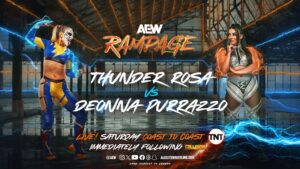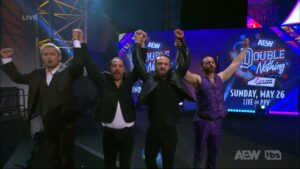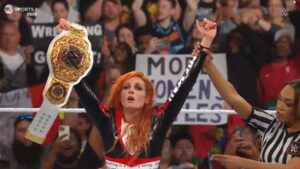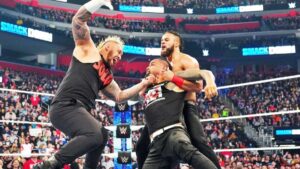Earlier today, the writing staff of Last Word on Pro Wrestling was roundtable discussing Lucha Underground and one of our UK writers, Alex Richards, mentioned that “LU reminds me so much of ECW – you’d go there and get over, so you could get a deal with a bigger company”. And while that’s not entirely true (guys like New Jack and Sandman were never truly every going to work anywhere BUT ECW), there is a certain correlation to ECW’s first few years and Lucha Underground’s. Obviously the style and presentation were different beasts – one was the hardcore and extreme styles previously only seen in Japan, the other a Mexican lucha libre influences program bringing to life the lore of the lucha characters. But what Lucha Underground has done with their first three seasons for professional wrestlers, both veteran and emerging indie, is incredibly similar to what ECW did for both ECW and WCW.
THE INTERNATIONAL PROMOTION TO NORTH AMERICAN AUDIENCE
Aside from the brutality and blood, one of ECW’s biggest influences on mid-90s pro wrestling – an influence was that definitely felt more in the indies like PWG, Ring of Honor and CHIKARA following ECW’s demise than in the WWF or WCW – was the showcasing of talent that most American and Canadian North Americans didn’t get to see very often and that was Japanese and Lucha Libre wrestlers. Most fans forget that it was ECW who first brought in luchadors like Rey Mysterio, Eddie Guerrero, Psicosis, Super Crazy and Juventud Guerrera, before they all fled en masse to WCW. It was ECW who first saw the potential in Canadians like Chris Jericho, Chris Benoit and Lance Storm before they went to WCW and the WWF. It was ECW who started portraying Japanese wrestlers as formidable and lethal fighters rather than Asian stereotypes, with the likes of NJPW’s Osamu Nishimura, FMW’s Masato Tanaka and Koji Nakagawa, Michinoku Pro’s MEN’s Teioh, Dick Togo and Taka Michinoku, and Big Time Japan’s TAJIRI. While some merely used ECW as a North American “excursion”, many of them went on to become legends in North America. Lucha Underground was originally somewhat of AAA’s NXT. They stocked the cast early with a lot of their mid-card or emerging stars whom they didn’t have a lot of room for down in Mexico, like Pentagon Jr., Fenix, El Hijo de Fantasma (King Cuerno) and others, and added in some legendary names like Blue Demon Jr. to appeal to the traditionalists. Now in America and around the world, the mid-card guys who have been pushed on Lucha Underground are now more popular worldwide than many of AAA’s actual top stars in Mexico.
INTERGENDER WRESTLING
In the early to mid 90s, WWF didn’t even know what to do with its own women’s division, so they shut it down. But in ECW, Paul Heyman made sure his women were as tough as the men – whether they were a valet or a bodyguard, there may come a time when they may get rough with their male counterparts. In fact, it was in ECW in the first intergender match-up since the carny days of Mildred Burke and Mae Young happened. In 1995, Luna Vachon entered ECW as Tommy Dreamer‘s bodyguard and aided him in his feud with Raven and Stevie Richards. Not only did she tag team with Dreamer against Raven and Richards, she also had the first interfender singles match in decades against Stevie Richards at ECW Heatwave ’95 inside a steel cage. Lucha Underground, like ECW, never had a Women’s Division. Whether you’re male or female, you all fight for the same prize, in the same ring. Lucha Underground has alway portrayed their women characters as strong heroes – Sexy Star held the Lucha Underground Championship and Ivelisse is a regular Trios Champion alongside Son of Havoc (Matt Cross) and Angelico. It’s arguably helped open up a lot of new people to the prospect of how powerful intergender matchups can be storywise.
THE VETERAN PERFORMERS
https://www.youtube.com/watch?v=YOhLu-ER4bU
When Eastern Championship Wrestling rebranded as Extreme Championship Wrestling following Shane Douglas‘ throwdown of the NWA World Heavyweight title, it began to focus more on it’s own homegrown stars and import talent than relying on former WWE or WCW stars as its focus. But that didn’t mean they ignored them entirely. Hardcore icon Terry Funk had a rebirth in the 90s thanks to his work with ECW – after an incredible 70s run, his 80s stint in WWF almost neutered him. Tracy Smothers seemed destined for the pastures after failed stints in WWF and WCW after success in the territories in the 80s. He joined ECW and became part of one of ECW’s most iconic factions, The FBI. Bam Bam Bigelow and Dean Malenko were other veterans who found career jumpstarts in ECW. Lucha Underground has brought in its fair share of veterans as well. Legends like Blue Demon Jr., Pimpinela Escarlata, and Dr. Wagner Jr. have been reintroduced to younger audiences in the US, while veterans such as John Morrison, Rey Mysterio, Chavo Guerrero Jr., Alberto El Patron (Del Rio), and Konnan all found ways to infiltrate the wrestling consciousness again after runs with the WWE or WCW. Some of AAA’s own mid-card guys that were stuck in holding patterns at the time also emerged as some of the show’s most popular characters, like Ricky Banderas (as Mil Muertes), Drago, Texano Jr., and Aerostar.
EMERGING INDIE STARS
But arguably Lucha Underground’s biggest impact on wrestling today has been the elevation it’s given to many of it’s emerging indie stars. While there’s no doubt that many of these stars had their loyal and devoted fan bases prior to Lucha Underground’s debut, appearing on LU definitely increased their presence around the world afterwards. ECW did the same thing – it took underappreciated, unnoticed or unwanted indie wrestlers like Taz, Rob Van Dam, Sabu, Tommy Dreamer, Raven, Lita, Lance Storm, Chris Jericho, and so on, and gave them a platform to show their stuff on a viable televised production (for the time). Many of ECW’s greatest characters went on to very successful runs in the WWE or WCW for years after (and many are still active today). Lucha Underground has done the same as well. Ricochet was a cult following prior to LU, but Prince Puma made him an internet sensation and indie darling. Pentagon Jr. and Fenix were unknowns outside of Mexico prior to LU and are now so popular they left parent promotion AAA and entered the world of the international indies. Jeff Cobb was a unknown journeyman who they masked up as Matanza Cueto before becoming one of the indie scene’s most lovable suplex machines. It was many people’s first glimpse of Ivelisse or Kairi Sane (when she was part of the Black Lotus Triad). It took WWE “almosts” like Matt Cross, Brian Cage and Willie Mack and made them into three of the indie world’s most unique and sought after indie stars. Which in turn has made Lucha Underground’s brand so uniquely intriguing; elevating the value and exposure for many of the next waves of indie superstars (and future WWE Superstars), helping to gestate, pollinate and inspire the entire world of pro wrestling.
Viva La Raza!






